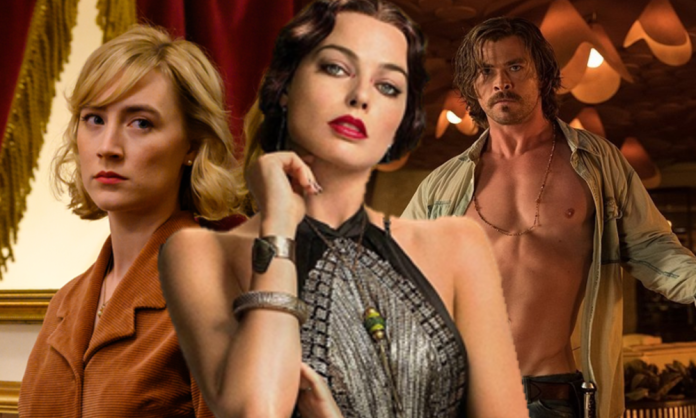This colorful, Persian-carpet-like review brings together ten films whose common denominator is that they all belong to the crime genre.
And the diversity of these films is enormous. There is the hyper-realistic Mystic River, directed by Clint Eastwood, and the work of another occasional actor, Edward Norton, in Motherless Brooklyn, which beautifully mimics classic American gangster cinema.
There is also the chilling thriller The Pale Blue Eye, which features Edgar Allan Poe (1809-1849), the master of mystical horror stories himself, as one of its main characters.
And, of course, the crime collection could not do without the queen of detectives, Agatha Christie. This time, her works are not included in the review, but her presence (and even her as a character in one of the films) is extremely prominent.
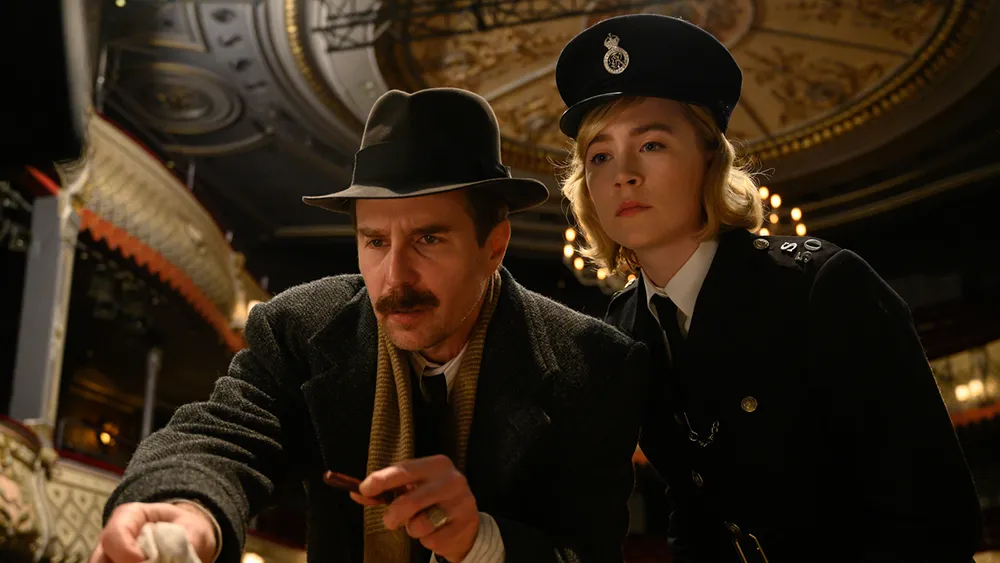
10. See How They Run (2022)
Agatha Christie, the queen of crime novels, is still in demand in cinema. Her works are approaching the 200 mark, and it’s not just thanks to the TV series that this beautiful statistic continues to grow every year.
One after the other, modern adaptations of works that have been adapted several times, directed by the British Kenneth Branagh, who has reserved for himself the leading role of the shallow Erkiel Pooh. We have already seen three such films. We will probably see more.
But debutant director Tom George’s See How They Run (2022) is not a screen adaptation of Christie’s story. Except that the film is set in 1960s London, where in 1953 the West End theatre Ambassadors is preparing for its 100th production of the Queen of Romance’s famous crime play, The Mousetrap.
Leo Copernicus (Adrien Brody), a not-so-successful Hollywood film director, wants to turn this popular play into a blockbuster hit, but all plans come to an abrupt halt when he is murdered at a party.
As soon as the initial circumstances of the crime are revealed to the career-worn and glass-eyed Inspector Stoppard (Sam Rockwell) and his eager assistant Stalker (Saroise Ronan), it becomes clear that the deceased had no shortage of outspoken enemies and jealousy. As is often the case in Christie’s own work, almost everyone is suspect.
The audience is given the initial information in two ways: through the images and through Leo Copernicus’s incantatory monologue, which introduces the most common criminal schemes where everyone is suspected, and the victim is usually the one we least expect. The investigation will be stuck for a while, but it will be brought to a standstill by some detail, usually seemingly insignificant, in plain sight, but which is precisely why no one pays attention to it for a long time.
And so it will be this time. And, of course, the investigators will risk their lives more than once in the course of investigating a mysterious murder.
For the seasoned detective fan, there seems to be nothing new, except the way this crime subplot is put together. And for this puzzle, the ingenious director has used several aces. In other words, he has linked a fictional crime story to real events and real theatre characters.
In 1952, the Ambassadors Theatre actually staged a play based on Christie’s The Mousetrap, which ran continuously (only to be transferred to another London theatre in 1974) until 2000. It might have continued, but the COVID pandemic had paralyzed theatrical activity by then.
Richard Attenborough and his wife Sheila Sim starred in that legendary play. They are now characters in the new film (played by Harris Dickinson and Pearl Chanda). Among the characters, we see the film’s producer John Woolf (played by Reece Shearsmith), the screenwriter Mervyn Cocker-Norris (David Oyelowo) and even… Agatha Christie herself (played by Shirley Henderson).
And all this in colors reminiscent of the world of Wes Anderson’s films. And don’t tell me you don’t want to see this film after all that…
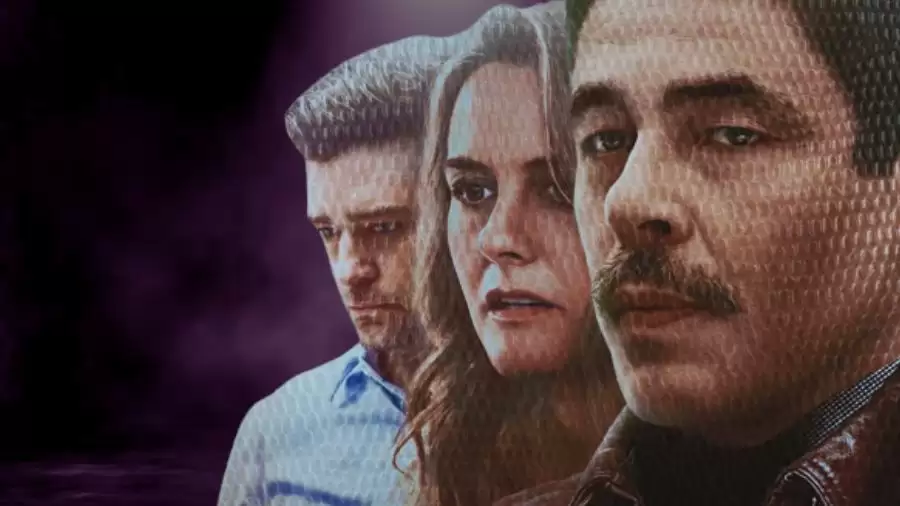
9. Reptile (2023)
Grant Singer, who has previously directed music videos and commercials, makes his debut with a crime film with the strange title Reptile, perhaps more suited to a TV documentary. We can only suspect that this will not be a story about the animal world.
In Reptile, the charismatic actor Benicio Del Toro plays Tom Nichols, a seasoned police detective who, together with his partner, investigates the case of Samer Elsvik, a real estate agent who was brutally murdered. The detectives get important information from outdoor surveillance cameras. A close friend of the murder victim, Will Grady (played by singer Justin Timberlake, who often appears in films), who was interviewed by the cops and discovered the body at the scene of the murder, also provides important details.
Vilas was planning to marry the murder victim, but she was still divorced from her husband, Sam Gifford. They are all at the top of the suspect list, as is Will’s overbearing mother. As the plot unfolds, the list of suspects only grows longer, as one would expect.
A few important details will also play a role, such as the DNA analysis of the semen found in the murder victim’s body and the secrets of some of the characters’ pasts in dirty commercial deals and drugs (how can we do without them now?).
Tom Nichols, a police detective who hides his emotions, is loyal to his profession and his wife (played by the now forgotten Alicia Silverstone). Surprisingly, he has not yet become disillusioned with people and life, he still thinks about honor and dignity, even though he sees almost every day the reality that has long since compromised these old-fashioned concepts and is mired in corruption.
But most interestingly, as he digs through the tangle of other people’s relationships, Tom slowly uncovers some of the nuances of his own life that he would rather not have known.
It’s hard to expect anything out of the ordinary from a debutant, but Grant Singer is to be commended for his professionalism and for playing well with the elements of classic film-noir. Without trying to appear radically original, the director quotes well-known films in the genre, such as Polanski’s Chinatown, C. Hanson’s L.A. Confidential, B. De Palma’s The Black Orchid, and even the popular TV series True Detectives.
Another plus is the prominent, albeit small, supporting roles played by the rarely seen Eric Bogosian, Michael Pitt and Frances Fisher.
There are enough pluses to call Reptile one of the most remarkable Netflix premieres of this season. It has been leading the news charts on this platform for some time.

8. A Simple Favor (2018)
I Am David (2003), the first film from director Paulo Feig, tells the moving story of a 12-year-old boy who escapes from a communist concentration camp in Bulgaria and embarks on a journey to reach Denmark. All he has is a loaf of bread, a compass and a letter, which he must take to Copenhagen, where he is supposed to be taken care of by good people.
After making a name for himself with this film, the director went on to do some more television work and took a long dive into the comedy maelstrom, where he felt like a fish in water. His comedies Bridesmaids (2011), The Heat (2013), She is a Spy (2015) and the new version of Ghostbusters (2016) have catapulted him to the forefront of the funny genre.
A Simple Favor is a slightly more complex case. It combines the director’s favorite comedy style with elements of classic crime cinema. The plot centers on two girlfriends played by Anna Kendrick and Blake Lively. And that’s the first major plus point of the film.
Emily Nelson (Blake Lively), a glamorous blonde spokeswoman for a New York fashion house, once asks a seemingly innocent favor of the naive brunette housekeeper Stephanie (Anna Kendrick). Both of their children go to the same school, so Emili asks her friend to take care of her son since she sometimes has to stay late at work.
However, even late at night, Emili does not turn up, her phone is disconnected and the secretary of the fashion house assures her that her colleague has gone to Miami for a week’s holiday. Together with Emili’s husband Sean, Stephanie contacts the police and the search for the fugitive begins.
The comedy, which promised a lot of domestic misunderstandings at the beginning, takes a turn for the crime arc, which, as we know, should not be short of dangerous surprises. It smacks of a real thriller, but the hunch is that the director, who has honed his talent in comedies, will not miss the opportunity to lighten up the thickening atmosphere with lighter situations.
Firefighters, sensation-hunting tabloid photographers and even online volunteers join the search for the fugitive. Stephanie was running a popular online account for housewives with valuable tips and recipes. Gradually, the search for the fugitive turned into a reality show.
And the investigation into the strange case keeps throwing up new intriguing details and unexpected circumstances. There is blackmail, dangerous flirting, arson, various machinations, even incest, and all sorts of disgusting greed and deceit.
An ideal film for those who like to sit on two chairs or chase two birds with one stone. Such viewers are guaranteed a double treat.

7. Bad Times at the El Royale (2018)
This review already includes one film based on Agatha Christie’s classic Ten Little Indians plot. It’s very simple, but it works surely every time. It is important that the crime (usually a murder) takes place in a closed environment and that everyone around can be a suspect.
In Tom George’s See How They Run (2022), this is the situation in a 1960s London theatre, where a not-so-successful Hollywood film director is murdered while he is trying to turn a popular play into a hit.
And in Drew Goddard’s film Bad Times at the El Royale, a crime story with a murder in the late 1960s is set in an abandoned hotel on the California-Nevada border near Lake Tahoe, undoubtedly harboring a dark secret from a dark past.
The choice of setting is very ingenious. You can book a hotel suite on the Nevada side (cheaper), or you can book a suite in California (a dollar more, but no alcohol is allowed).
There is another – almost metaphysical – meaning of such a place: in the context of the film’s mystical events, it is not only between two countries, but perhaps even between life and death. A kind of hell’s vestibule, where everyone gets what they deserve.
Seven strangers meet in this area. Each of them has a secret of their own, which they say they have buried safely in the depths of the past. But someone (?) knows them all, and on one fateful night, he decides to give all the guests one last chance to atone for their sins…
Director Drew Goddard seems to like claustrophobic environments. In his previous thriller The Cabin in The Woods (2012), horrific events haunt five friends in a deserted cabin in the middle of the woods. Here, the company hoped for a change of scenery, relaxation and fun. But just then, horrible and eerie things begin to happen.
El Royale is set in the 1960s. And that is important for the director. If The Cabin in the Woods was not only a thriller, but also a wicked character satire, in El Royale the satire is more social, because it is about the events and customs of America at that time.
In telling a story that is not lacking in tension, the director does not rush anywhere. The slow pace and the flashbacks are necessary for additional characterization and important details. Sometimes the same situations are presented from several perspectives. These “brushstrokes” paint a portrait of the times, which may sometimes be straightforward, but it is accurate.
Perhaps it is only the anticipation of the denouement that wears one out prematurely. However, keeping the audience’s attention at a high emotional level for two hours and another twenty minutes is not easy. It would not hurt to shorten the film’s apparently overlong running time, but it could be done at the expense of easily predictable situations, without much loss to the main plot.
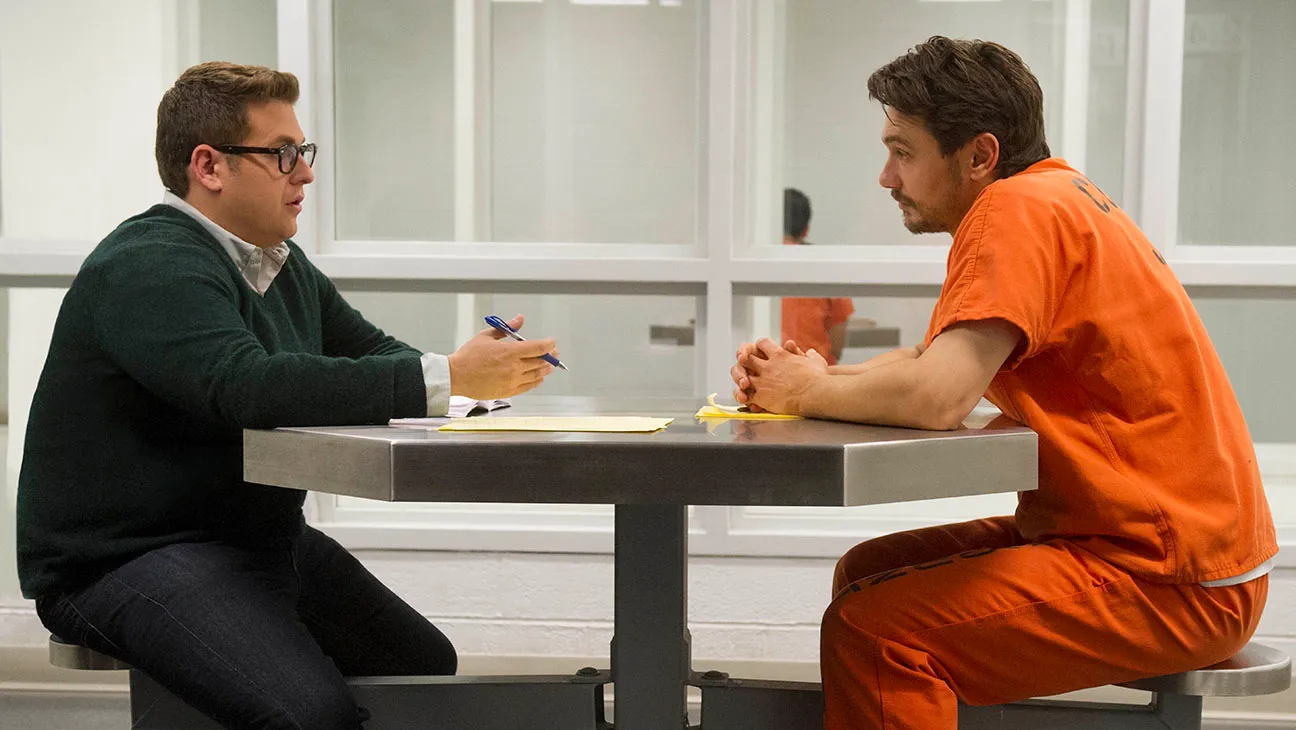
6. True Story (2015)
Filmmakers love to make films based on true stories. Stories about criminals of all kinds have a special place among them. Screenwriters don’t even have to make anything up – just read court records and books about the criminal adventures of defendants! But for some reason, this kind of authenticity doesn’t always turn out to be interesting in cinema. More often than not, it is not by meticulously recreating real events that the best results are achieved, but by overtly romanticizing the criminals and creating a nice myth about them.
Rupert Goold, the director of True Story, tries to apply the rules of the first category of films. He does not avoid being overly illustrative and using banal dialogue. Scriptwriters less dependent on reality would undoubtedly have avoided both dangers.
And the plot is truly extraordinary.
The protagonist, Michael Finkel (played by Jonah Hill), a real-life reporter for the New York Times, had a reputation as a lucky baby. He knew how to hunt down and intriguingly present sensational topics that made the charts ten times over.
In 2002, he was gathering information about minors being exploited on plantations in Africa. Michael interviewed several teenagers, but did not take pictures of the beatings. And when he returned to the editorial office, he hastily created another sensation by embellishing the facts, compiling material from several different sources and fabricating a photo, and presenting it all as the authentic story of a teenager.
When the deception was exposed, Michael used the excuse that it was more important for him to create a story that would thrill readers than to tell the truth. The reputation of a publication with the highest media standards was tarnished, and the forger was immediately fired. In the world of serious media, this means a “black mark” or, more simply, a “wolf’s ticket”.
The scandalously compromised “shark of a feather” is now unwilling to be employed. But just then, a juicy piece of information reaches the man, in which his name is used in an unexpected context.
Michael discovers that a dangerous recidivist, who has been hiding in Mexico for some time, has murdered his wife and three children, and who somehow calls himself Michael Finkel, but is really Christian Longo (played by James Franco).
The real Michael takes on this strange case with a dual purpose: firstly, he wants to find out why the killer has taken his identity, and secondly, he hopes it will be the perfect opportunity to redeem his tarnished reputation.
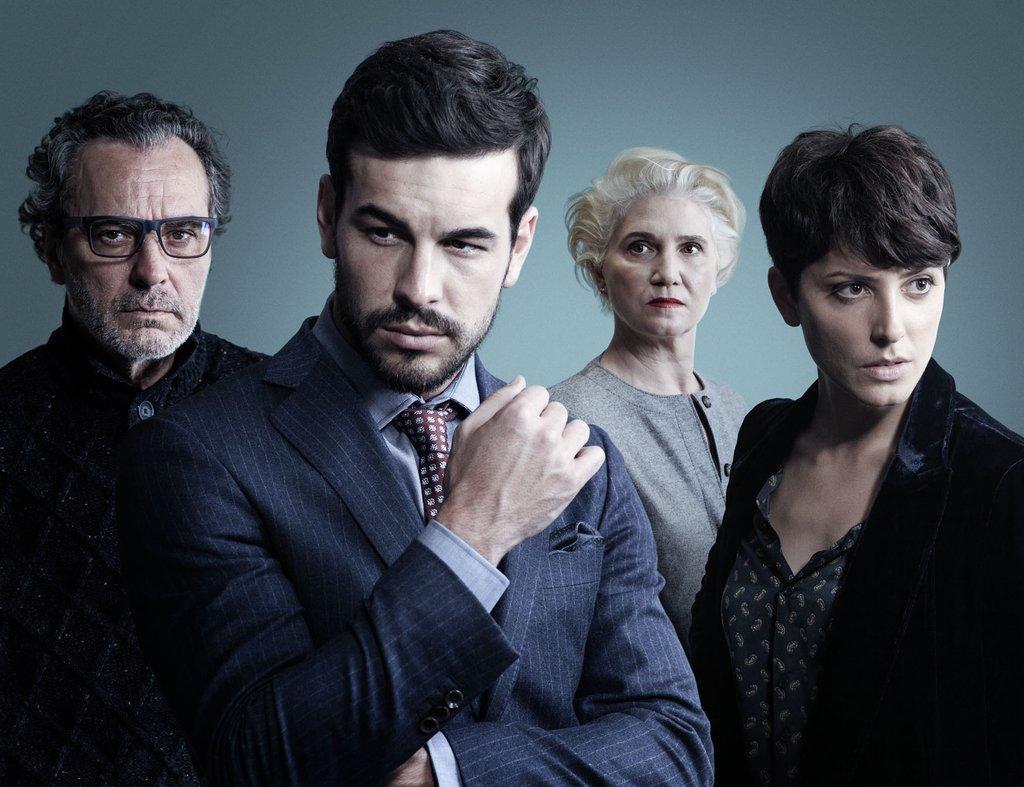
5. Contratiempo/ The Invisible Guest (2016)
Spanish director Oriol Paulo (born 1975) is often described as a follower of Alfred Hitchcock, the master of classic thrillers. The director himself agrees, calling his first film (still in its infancy) McGuffin (1998).
Hitchcock called something abstract or utterly improbable a McGuffin. It can be a detail that is usually not even specified, or just a hint of a detail that might lead to something. The important thing is that such hints contribute significantly to creating an atmosphere of fear and anticipation.
Similar “Hitchcockian” details are also present in Oriol Paulo’s The Invisible Guest (2016), which is the film’s English-language title. Contratiempo is the original title of the film.
Here, a young businessman, Adrian Doria (Mario Casas), is in big trouble when he is found in a hotel room next to the body of his murdered lover. The room was locked from the inside, the windows did not open and nobody had really left the room.
A similar puzzle was solved in 1907 by Gaston Leroux, the master of French detective fiction, in his novel The Mystery of the Yellow Room, where a young girl was attempted to be murdered in a room in an ancient castle, the door of which was locked securely and the only window in the room was covered with bars and shutters, with an iron bolt on the inside.
Adrian Doria, of course, categorically denies being the killer. He claims to be the victim of an unknown assailant. But he cannot explain who killed the girl, who hit his own head on the mirror and, above all, how the real perpetrator could have escaped from the closed room.
A seasoned lawyer, Virginia Goodman (Anna Wagener), takes on the intricate mystery. Her lengthy conversations with the suspect are like a thorough psychoanalysis session. The lawyer, who has seen the hot and the cold, and the more attentive viewers gradually realize that the most important details of the crime are to be found somewhere other than the murder scene. And that the smallest details of the quota, which are the ones the lawyer pays most attention to at the beginning, will be completely unimportant.
It also turns out that both the suspect and the crime investigator are playing their own games, the rules of which are not known to the other side. For a large part of the film, the viewer feels like an observer of a chamber play, but understands that it is impossible to let down one’s guard, because in the dialogues of interlocutors who deliberately mislead each other, even an accidental word, an intonation, or a barely perceptible look can be important. Everything is important and everything has its subtext.
Oriol Paulo’s other films have also had a considerable impact. El cuerpo (The Body, 2012), a mystery thriller, was another story of murder and mysterious disappearance: a morgue worker who was scared to death of something was murdered, and a corpse that had recently been brought to the morgue disappeared.
And in the horror thriller Julia’s Eyes (Los ojos de Julia, 2010, produced by Guillermo del Toro), Julia, an astronomer with a terminal eye disease, discovers her twin sister’s dead body in the basement of her house. She is determined to find the culprit before the light goes out in her eyes.
In addition to the masterly plotting (as always in Oriol Paulo’s films), The Invisible Guest is based on the relativity of truth. The authors manage to keep the tension (what Hitchcock called “suspense”) rising until the final denouement, which will certainly be unexpected. Then we will realize how right the film’s advertising slogan is: “There are two sides to every story. But there is always only one truth”.
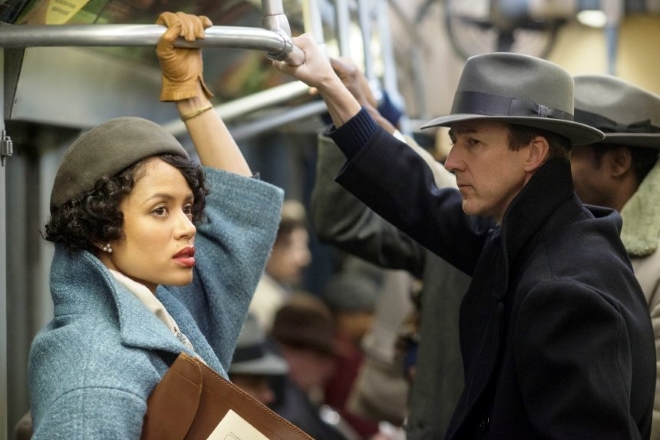
4. Motherless Brooklyn (2019)
Sooner or later, practically all actors with at least a little bit of fame try their hand at directing. For many, it is their first and last experience: after comparing acting with directing (and satisfying their creative ambitions), they usually return to what they know better and continue to delight their fans with their roles.
But of course, there are exceptions. For example, Clint Eastwood, who has already started directing after becoming a famous actor, will have nearly four dozen independent feature films in his “piggy bank” when he celebrates his ninetieth birthday (31 May this year).
The number of films directed by actor Edward Norton is less impressive. Last year’s Motherless Brooklyn is only his second independent film. But already his debut, Keeping the Faith (2000), has become a landmark film of the late 20th century in its own right. It was a sensitive romantic comedy about two friends, Brian (Edward Norton) and Jake (Ben Stiller), who were inseparable as children and remained so. And Anna (Jenna Elfman) was friends with both as a child. However, she has not seen them for a long time. And as soon as she arrived in good old Manhattan, Anna found her old friends. Both men are now serving God diligently, but in different churches. One became the priest Father Brayen Fin, the other Rabbi Jake Shram. When they see that their fat childhood friend has become an attractive young woman, they fall in love. But the Catholic priest is tormented by his vows of chastity, while the rabbi can only marry a Jewish woman…
The complicated love triangle is developed in a very subtle way, with charming, I would even say impressionistic touches.
The second film, Motherless Brooklyn, directed by Edward Norton, is a completely different style. This is understandable, because this time he is trying to play with the gangster cinema, which has a great tradition in America.
Gangster cinema in America started almost simultaneously with the Great Depression of 1929, which was the perfect breeding ground for organized crime. Newspapers then were abuzz with reports of gang wars on the streets, pictures of bloody crackdowns on rivals, and portraits of gangsters willingly posing for photographers.
Edward Norton read Jonathan Lethem’s novel on which Motherless Brooklyn is based almost two decades ago and felt the urge to adapt it even then. Later, when writing the script, he decided to move the time from the mid-1990s to the 1960s, closer to the era of classic gangsterism.
In the very first scene, the main character, Lionel Esrog (played by Edward Norton), finds a loose thread in his sweater sleeve, tries to cut it and … gets involved. It’s a good metaphor for criminal intrigue – after all, detectives, when they get hold of a clue, roll the ball of investigation long and patiently until the thread leads to the desired result.
But in this scene, the director and also the actor in the lead role characterizes his hero very aptly: Lionel suffers from Tourette’s Syndrome, a disease that turns a person into a ball of nerves. According to Wikipedia, the disease (which medical doctors call hereditary neuropsychiatric disorder) “begins in childhood and is characterized by multiple physical (motor) tics and at least one vocal (phonic) tic. These tics appear and disappear and may even be temporarily suppressed.”
Vocal tics are particularly noticeable in Lionel’s manner of speaking – often his impulsive, rapid-fire speech resembles a stream of meaningless words. But there is a logic to it that allows the man to remember other people’s conversations, important details and, most importantly, not to be distracted when he needs to concentrate as much as possible.
Paradoxically, the specific disease and its clear symptoms make Lionel an ideal detective. He is a detective working in the office of professional sleuths run by Frank Mina (Bruce Willis).
Many years ago, Frank took in four Brooklyn Street strays, who grew up to be his helpers. And for the orphaned Lionel, Frank was a real father.
When Frank is murdered, it is Lionel who takes on the case, and the filmmakers immerse the audience in a thick, gloomy urban atmosphere that is stylistically very reminiscent of Sam Mendes’ retro-crime noir Road to Perdition (2002). Cinematographer Dick Pope certainly deserves a warm pat on the back for this. In terms of unexpected plot twists and shocking revelations, Motherless Brooklyn resembles Roman Polanski’s Chinatown (1974) or L.A. Confidential (1997, directed by Curtis Hanson).
Secrets abound in Motherless Brooklyn. Most of them are cleverly hidden under the veil of the rapid redevelopment of New York and the renovation of Harlem’s poorest neighborhoods. One of the central “architects” of this renewal is Mouzes Randolph, a powerful figure in the city’s administration, obsessed with the Napoleonic complex, who has no regard for means in the name of a grand goal. He is played with great intensity by Alec Baldwin, who uses several colors from his own arsenal, which in recent years has often been directed towards the much more topical and high-profile current US politics (one of the most memorable episodes of the film is Randolph’s emotional monologue on the power of government).
It is hard to say anything new in what has long been a classic of US gangster cinema. But director Edward Norton and actor Edward Norton seem to have succeeded.
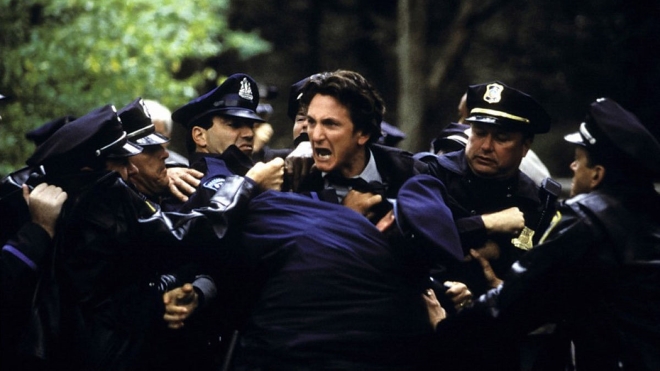
3. Mystic River (2003)
Director Clint Eastwood often takes on risky subjects, defies political correctness and is not afraid of angry criticism. In Gran Torino, he plays the sullen, taciturn Walt Kowalski, a former Korean War veteran, who makes no secret of his hostility towards blacks and “narrow-minded” immigrants (and, as the context makes clear, with good reason). If you call this old man a racist, he should not get angry. Clint Eastwood himself did not get angry, even when the French film classic Jean-Luc Godard called him a fascist.
Clint Eastwood’s American Sniper (2014) was viciously criticized in his homeland and even accused of idealizing war and murder (the film’s hero, real-life sniper Chris Kyle, eliminated 255 live targets in various “hot spots” during his military career until 2009.
The film Mystic River was also received with mixed reviews in America, winning Oscars in two acting categories, with Sean Penn winning for lead actor and Tim Robbins for supporting actor. Both starred as Jimmy Markum and Dave Boyle, friends who grew up in an Irish community on the outskirts of Boston. They had another friend, Sean Divine (Kevin Bacon), but childhood abuse tore the trio apart for a long time.
It all started the day Dave, the most sensitive boy, was kidnapped by two plain-clothes men in broad daylight and taken away in a police car. The boy, a victim of pedophile abuse, escapes after only four days.
That’s when Jimmy, Sean and Dave parted ways. Now Jimmy, a tattooed ex-convict, is a shop owner trying to start a new life with his second wife. Sean is a policeman with no good achievements at work or in his family life with a perpetually unhappy wife. And Jimmy’s childhood sexual abuse has turned him into a neurotic who has never been able to break free from the grip of fear.
The friends have long avoided each other, but as adults they are reunited by a brutal crime: someone has murdered Jimmy’s daughter. Jimmy, who has tasted the bread of crime and has many friends in criminal circles, wants to find the killer as soon as possible and bring him to trial. But police detective Sean, who has been assigned to investigate this complicated case, is not happy with his ex-boyfriend’s plans. And Dave is the prime suspect, having returned home that fateful night badly injured and bloody.
It is easy to see that the old history of violence and the new crime will be somehow interconnected, but the most important details must not be revealed.
The title of the film, Mystic River, is a reference to a river that runs north of Boston. However, the mystical context of the film’s title can be developed further if desired. According to one film critic (not from our country), who is fond of deep associations, the crime on the banks of this river can be linked to a kind of Styx through which those who have crossed can never return.
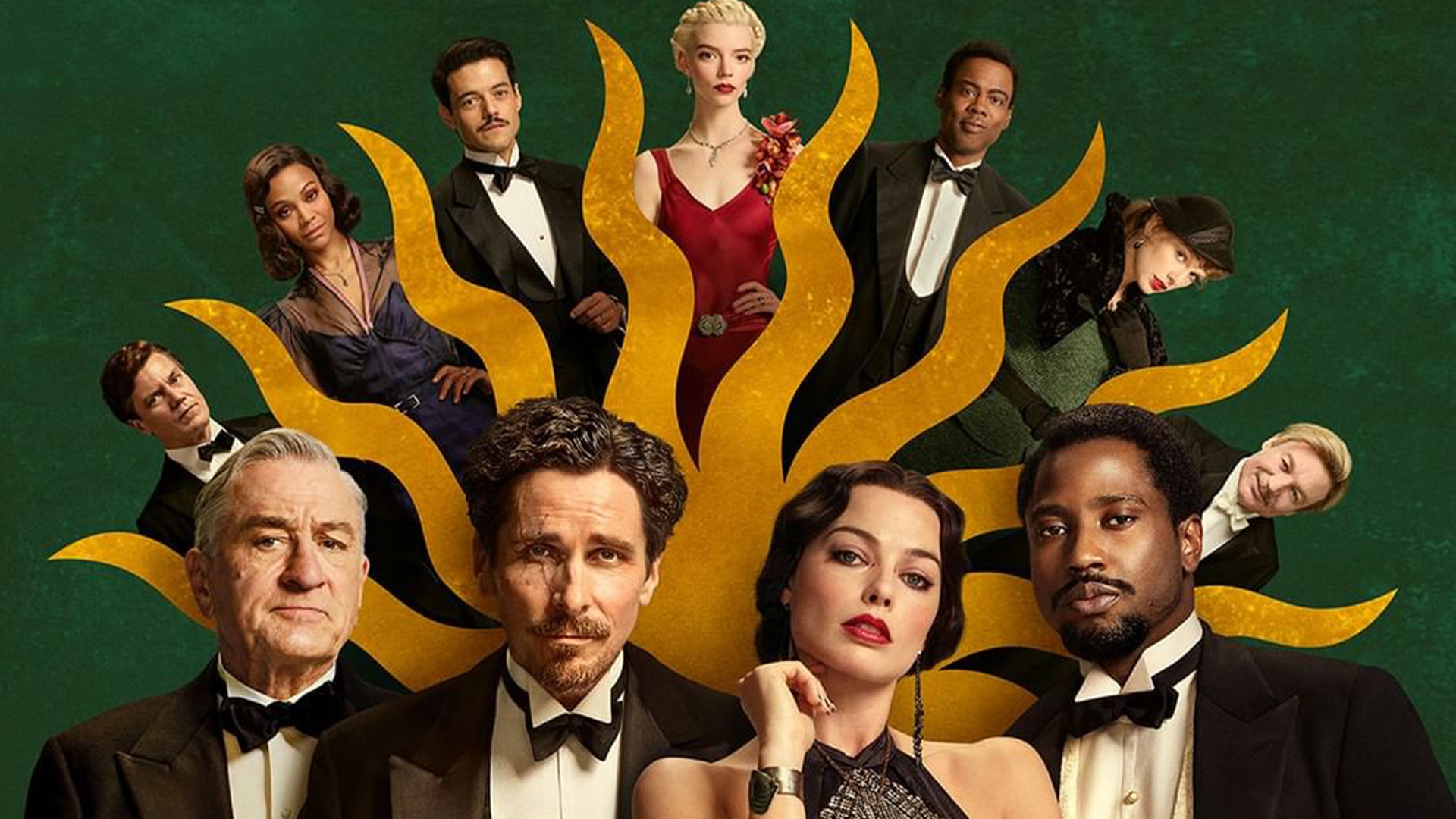
2. Amsterdam (2022)
We seem to know American film director David O. Russell well. Or rather, we know his films pretty well, and that he is most successful in making comedies (military, adventure, melodramatic).
We remembered the director’s name when we watched one of his first films, The Three Kings (1999), in which, during Operation Desert Storm, US Army Captain Archie Gates (played by George Clooney) discovers where Saddam Hussein’s gold reserves, which date back to the Kuwaiti Shahs, might be hidden. With a few associates, he sets out to seize this wealth.
The director of I Heart Huckabees (2004) called it an existential comedy because he tried to find answers to questions that are not at all ridiculous: what is the meaning of life, what determines one’s destiny, what is the significance of the most simple and unrelated events?
Silver Linings Playbook (2012) reaffirmed that love is both a disease and a cure for the worst neuroses.
An American Affair (2017) is a playful comedy about corrupt politicians and another story about an ideal crime that is thwarted by unexpected circumstances and the “human factor”.
Christian Bale comes from An American Affair to star in David O. Russell’s latest film so far, Amsterdam. This time, he plays Bert Berendsen, a doctor who returned from the First World War without one eye and felt useless. He began to take care of similar unfortunate veterans and recommends to them experimental medicines which, to be honest, do not always guarantee the expected result.
But these were minor problems compared to the problems that would later befall the man. One day, Bert is asked by a good friend, lawyer Harold Woodman (Tenet star John David Washington), to help with the body of a colonel who has died under mysterious circumstances. The job must be done quickly and in complete secrecy, as the deceased’s daughter Lisa (Taylor Swift) is convinced that her father was the victim of a conspiracy and was poisoned.
It is immediately clear that the girl’s fears are not without reason. But just then, Bert, Harold and their long-time acquaintance, nurse Valerie (Margot Robbie), are in mortal danger. They are accused of a murder they did not commit and become suspects. The trio find themselves at the center of the most secret conspiracy in American history.
Another American affair is born. As the film’s blurb puts it, “sworn to protect each other no matter what, the friends in a perilous situation must remain true optimists in order to escape the trap that is closing in”.
There is no shortage of traps of all kinds (real and false). Unfortunately, it is all painfully familiar and has been seen many times before. The most annoying thing is the protagonist’s frequent mocking commentary on the action, when the viewer is already seeing it all at the same time.
The action is very lively at the beginning of the film, but slows down over time. It is slowed down most of all by the intrusive flashbacks. In general, such dramatic elements are used when there are some important details in the past episodes (especially important in a detective story). But in Amsterdam, such brief flashes of the past do not explain anything new and remain hollow ornaments.
So, the possibilities of retro cinema are used to perfection (here the Hollywood stylists and designers are showing their extra class!).
There is no shortage of popular faces in Amsterdam. Celebrities such as veteran actor Robert De Niro and lesser-known but familiar actors Michael Shannon, Mike Myers, Timothy Olyphant, Matthias Schoenaerts, Anya Taylor-Joy and Rami Malek deserve to appear in a bigger or smaller role.

1. The Pale Blue Eye (2022)
January 19th was the birthday of the famous American writer Edgar Allan Poe (1809-1849). His nightmare-filled life and the eerie circumstances of his death are worthy of a terrifying novella by the writer himself.
The writer’s funeral is also worthy of a special plot…. 160 years later. At the beginning of 2009, a strange ceremony took place in Baltimore in the USA, where the authors wanted to bury Edgar Allan Poe after many years, with the respect due to him. The organizers of this symbolic funeral wanted to mark the 200th anniversary of the birth and 160th anniversary of the death of the famous horror novelist in this strange way.
In 1849, when the 40-year-old writer died in poverty, he was accompanied on his final journey by just a few random people. Soon afterwards, the memorial stone on his grave was destroyed. As E.A. Poe was terribly frightened by something when he was brought to a hospital in Baltimore and died without ever explaining what had happened to him, many theories were born about his last days. Some believed that the cause of the classic’s death was progressive insanity, while others were inclined to believe that opium and alcohol had killed the writer. As the patient’s medical history and death certificate were not preserved, other possible causes of death were also considered, such as heart defect, epilepsy, syphilis, meningitis, cholera and rabies.
But the most exotic version of the writer’s last days, worthy of another of Poe’s own horror novels, is that on the eve of his death, the writer wanted to help the cops catch a maniac who was copying the murders depicted in his books.
The film The Pale Blue Eye, released on Netflix at the end of last year, recreates another nightmarish period in the writer’s life.
In the 1830s, a horrific crime took place at the West Point Military Academy in New York: a young cadet was found hanged, and then someone cut out the deceased’s heart in the morgue. Rumors of a ritual murder immediately spread, but no one knew who had committed it or why.
August Lendor (played by Christian Bale), a nearby constable and veterinarian, is called in to investigate this mysterious incident, whose life has been shattered by the loss of two of his closest loved ones a few years ago: his wife has died and his daughter disappeared.
As the young students of the academy are forbidden to give out any information, Edgar Allan Poe (played by Harry Melling), a cadet who has already published two books of poetry, dares to help the grim detective.
As befits a good detective story, the murder that drives the film’s plot provokes a long list of potential suspects: the hangman’s fellow students, the academy’s top brass with something to hide, and the local doctor Daniel Marquis (Toby Jones), who has been seen in comedies before, who is crazy about all kinds of mystical and demonic rituals.
Based on the bestseller by Louis Bayard. The writer has a great way of weaving stories full of mystery, usually involving famous historical figures such as the famous French stalker Vidocq (The Black Tower), US presidents T. Roosevelt (Roosevelt’s Beast) and A. Lincoln (Mr Lincoln’s Wedding).
The Pale Blue Eye continues the gallery of such works. This is the third collaboration between director Scott Cooper and Christian Bale, who previously made the crime thriller Out of the Furnace (2013) and the western Hostiles (2017).
And Edgar A. Poe is played by Harry Melling, known from his role as Dudley Dursley in the Harry Potter films.
Timothy Spall, Charlotte Gainsbourg, Gillian Anderson and Hollywood veteran Robert Duvall shone in small roles.

